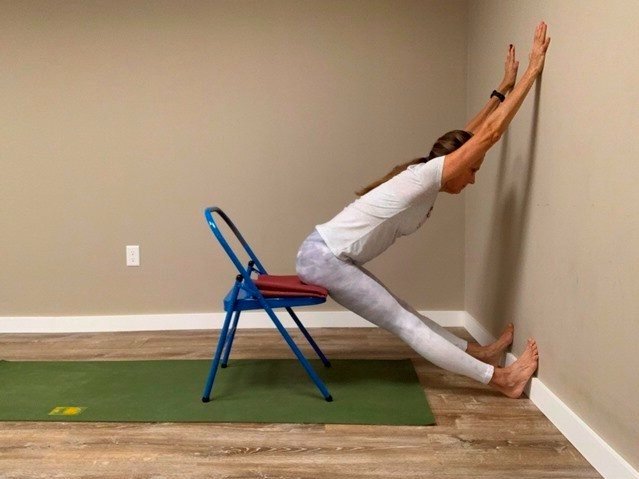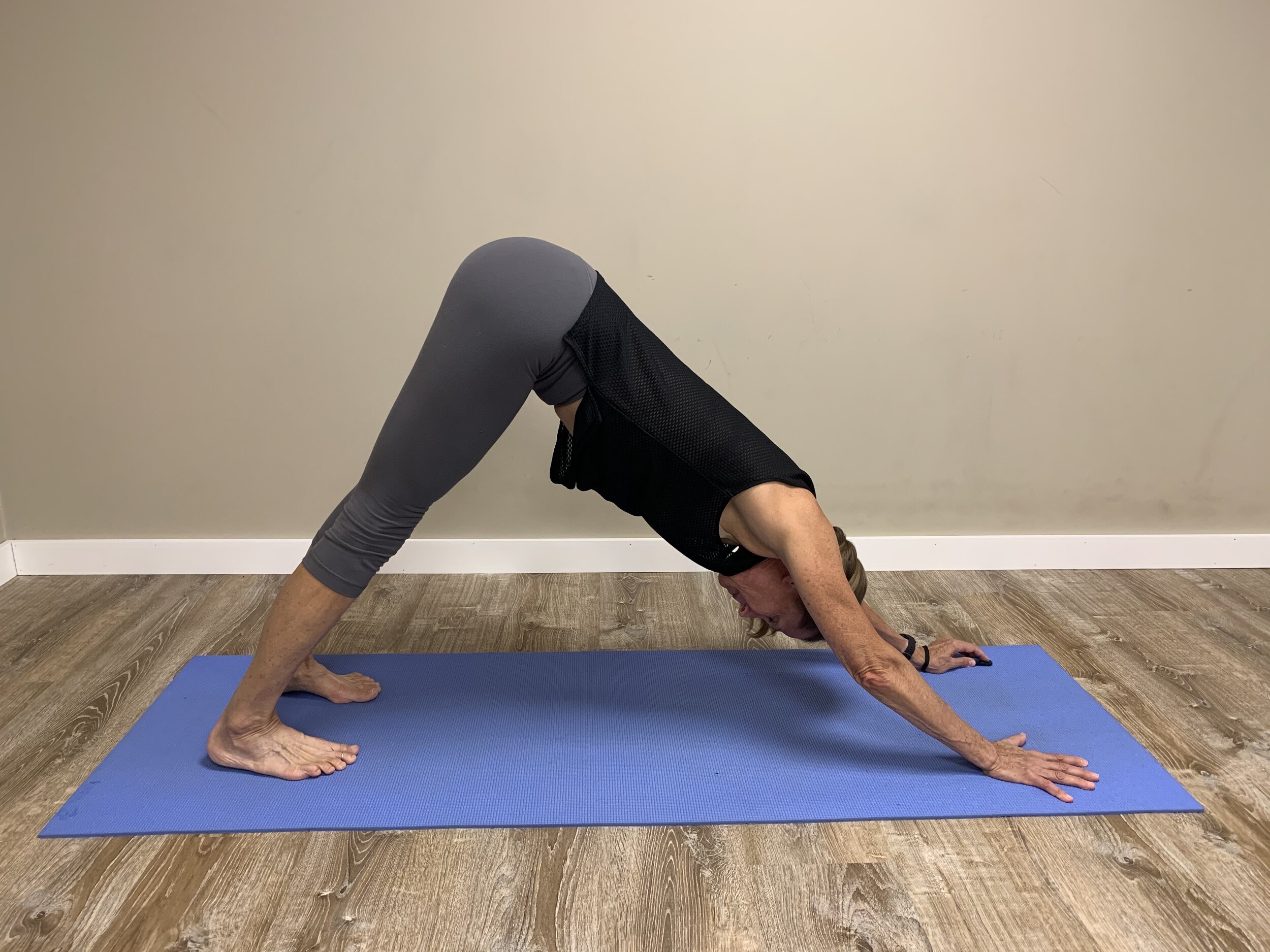There are only 12 yoga poses*…
And you do them in different relationships to gravity.
(*I have never actually counted the poses, or groups of poses, so there may be more than that, it’s just a gross generalization to make a point. )
Today’s post has to do with the relationship between Urdhva Hastasana, or Upward Hands pose and Adho Mukha Svanasana (Downward facing Dog). Urdhva Hastasana is one of the first things students learn after they learn to stand in Tadasana. If you cannot do Urdhva Hastasana correctly, you will have difficulty doing Adho Mukha Svanasana (Downward Facing Dog), Adho Mukha Vrksasana (Handstand, literally Downward Facing Tree Pose) and even Vrksasana (Tree).
Start by standing in Tadasana. Spin the palms out and reach the arms out to the side and up over head. Are you able to do so without arching your back?
Stretching the arms overhead and keeping the arms straight and parallel is considered a normal range of motion, but most people lose their ability to straighten their arms because it isn’t something that is required in our daily activities. Often students will tell me that they have wrist issues, or arthritis caused by yoga when what they have is restriction in movement at the shoulder and that misalignment causes problems down the line in the arms, wrists and hands. If you can’t straighten your arms overhead when there is no weight on your hands, you will not be able to straighten them correctly in poses like Downward Facing Dog and Handstand. Adding weight to a position will only magnify any problem.
Let’s start by standing in Tadasana with the arms in Urdhva Hastasana. Assess yourself in a mirror. Are the arms straight and parallel? Or, are they bowed out or backwards and bent? Or, can you only keep your arms straight if your wrists are wider than your shoulders. That is ok, but the work would be to bring the arms into parallel by using either a belt around the wrists or blocks between the hands until you can straighten your arms. Once you can raise the arms overhead with your arms parallel, you are ready for other poses.
Tadasana
Urdhva Hastasana
Next, come to sit in the floor in Dandasana (this is simply Tadasana folded in half at the hips). Are you able to maintain the spine straight? Raise the arms overhead in Urdhva Hastasana. Did anything change? Learn to raise the arms overhead without losing the lift in the spine and chest.
Dandasana
Urdhva Hastasana in Dandasana
If your back rounds when you sit on the floor, try sitting on the edge of a chair with your legs straight and feet on a wall. Can you sit up straight now with the pressure taken off of the hamstrings? If so, reach the arms overhead into Urdhva Hastasana and lean forward from the hips and place your hands on the wall. Can you see how this looks like Downward Facing Dog? This is a great modification for people who have wrist and shoulder issues and cannot do Adho Mukha Svanasana.
Is this Urdhva Hastasan in Dandasana on a chair? Or is it Adho Mukha Svanasana on a chair??? Can you see how I am a straight line from my hips to my wrists and from my hips to my ankles?
Next come into Adho Mukha Svanasana. Can you see how this pose builds from Dandasana with the arms overhead in Urdhva Hastasana? It is the same pose as in the picture above, it is just a different relationship to gravity. Are you able to keep your arms straight, with the base of the knuckle of the index finger pressing into the floor? (I have a remote shutter button under my left hand and that is why my hand is not flat on the floor.) The arms should look and feel like they are in Urdhva Hastasana with no pressure in any part of the wrist.
Adho Mukha Svanasana. Or, is it Dandasana with the arms overhead in Urdhva Hastasana?







